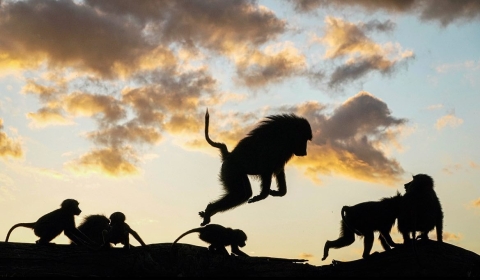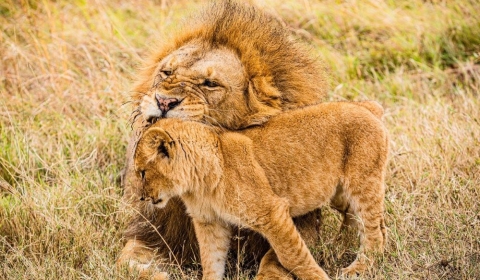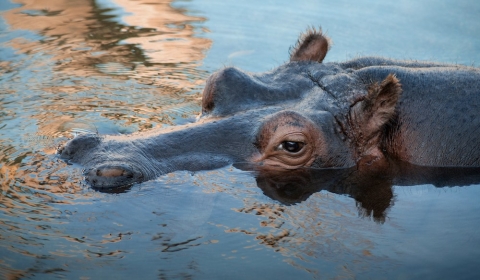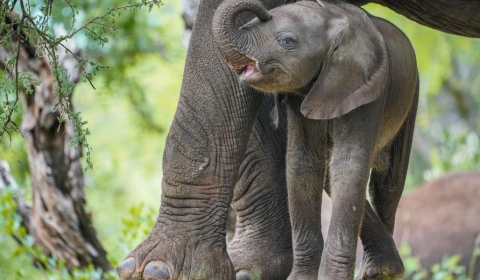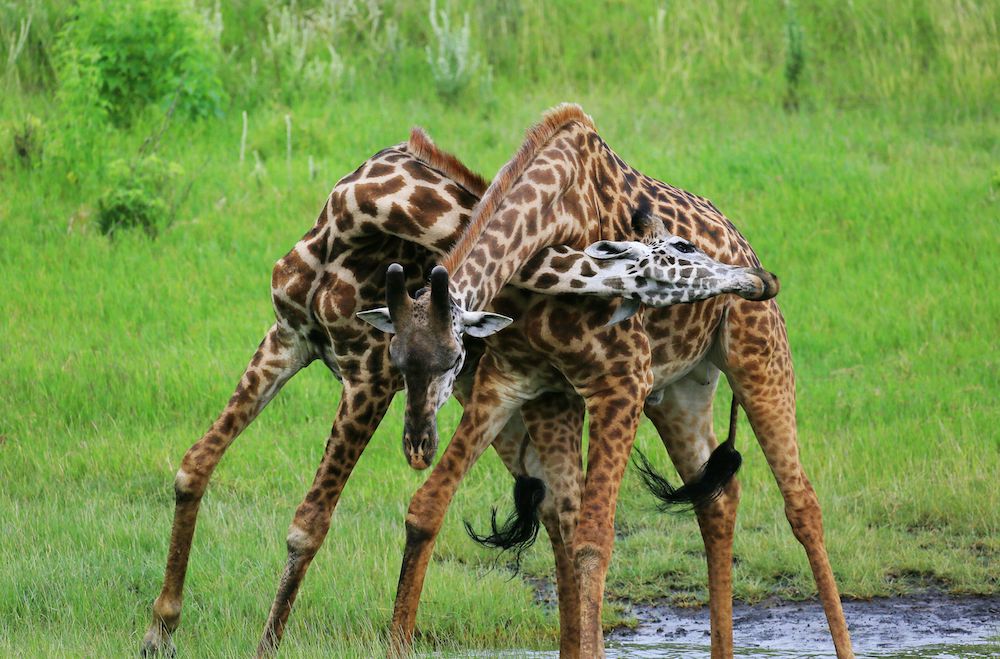
Overview
Location: Northern Tanzania, close to Arusha city. Size: Approximately 552 square kilometers (212 square miles). Established: 1960.
Geography and Landscape
Arusha National Park is known for its varied landscapes and dramatic scenery, including:
Mount Meru: The park's centerpiece, Mount Meru is the second-highest peak in Tanzania at 4,566 meters (14,980 feet). It is a dormant volcano providing a challenging yet rewarding trekking experience.
Ngurdoto Crater: Often referred to as "Little Ngorongoro," this volcanic crater is home to lush forests and a variety of wildlife.
Momella Lakes: A collection of shallow alkaline lakes that attract a wide array of birdlife.
Lush Forests: Montane forests cover the slopes of Mount Meru, harboring diverse flora and fauna.
Wildlife
Arusha National Park, though small, is rich in wildlife:
Mammals: Includes giraffes, buffaloes, zebras, warthogs, and various antelope species such as bushbucks and waterbucks. Although it is not a Big Five Park, leopards and elephants are occasionally sighted.
Primates: Notably, the park is home to the black-and-white colobus monkey and blue monkeys.
Birdlife: Over 400 species of birds, including flamingos, trogons, and turacos. The diverse habitats support both resident and migratory species.
Conservation Efforts
Protection Initiatives: Focus on maintaining the diverse ecosystems and protecting the wildlife from poaching and habitat loss.
Community Engagement: Local communities are involved in conservation efforts, providing education and sustainable livelihood opportunities.
Tourism
Activities: Arusha National Park offers a variety of activities:
Game Drives: Exploring the park’s diverse habitats and spotting wildlife.
Canoe Safaris: Unique canoeing experiences on the Momella Lakes, providing close encounters with aquatic birds and animals.
Walking Safaris: Guided walks through the park offer opportunities to explore its flora and fauna on foot.
Mountain Climbing: Trekking Mount Meru, which offers breathtaking views and is often used as an acclimatization climb for Mount Kilimanjaro.
Bird Watching: Due to the park's rich avian diversity, it is a prime destination for bird watchers.
Unique Features
Mount Meru: Offers stunning views and is less crowded than Kilimanjaro, providing a more intimate trekking experience.
Momella Lakes: Their alkaline waters attract flamingos and other waterfowl, making it a haven for bird watchers.
Ngurdoto Crater: Provides a lush, secluded area teeming with wildlife and scenic beauty.
Visitor Information
Access: Easily accessible from Arusha city, just a short drive away. The park is also close to Kilimanjaro International Airport.
Entry Fees: Entry fees are required and contribute to the park’s maintenance and conservation efforts.
Regulations: Visitors should adhere to park regulations to protect the wildlife and environment, including staying on designated paths and not disturbing the animals.
Highlights
Proximity to Arusha: Its location makes it an ideal day trip for visitors based in Arusha.
Scenic Diversity: The park's varied landscapes, from mountain forests to alkaline lakes, offer breathtaking views and diverse habitats.
Wildlife and Bird Watching: Despite its smaller size, the park’s rich biodiversity makes it a rewarding destination for wildlife enthusiasts and bird watchers.
Cultural Interaction: Opportunities to visit nearby Maasai and Meru villages to learn about local cultures and traditions.

